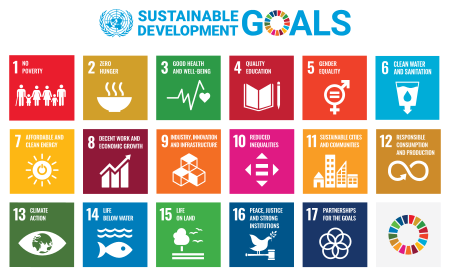Ecological Footprint and Sustainable Development
| Environmental Science | |
|---|---|
| Topics | What is the Environment | Planetary Boundaries | Ecological Footprint and Sustainable Development | Food and Agriculture | Population | Ecology - Definitions and Outline | Energy Flow in Ecosystems | Population and Community Ecology | Material Cycles | Biodiversity | Energy | Atmosphere and Climate | Global Warming | Air Quality | Water Quantity | Water Quality | Solid Waste |
| Look at the related topics of ecological footprint and sustainable development. This includes the sustainable development goals (SDGs). |
Contents
Ecological footprint
The ecological footprint is the amount of land that would be required to provide the resources for a population
The world's ecological footprint (2022) is 2.58 ha [note 1]per person[1]
Biocapacity is the land available to meet people's demand. The Earth's biocapacity (2022) is 1.51 ha per person.[1]
[math]\frac{2.58}{1.51}=1.71 Earths[/math]
In words, humans are now using resources 1.71 times what the Earth can provide. By 2040 this will grow to about 2 Earths.
The following table shows the footprint/biocapacity for selected countries.[1]
Footprint Biocapacity Australia 6.1 11.5 United Arab Emirates 8.9 0.6 United States of America 7.8 3.7 Russia 5.8 7.5 Thailand 2.4 1.2 India 1.1 0.4
I=PAT
As can be seen from above, the footprint is not only dependent on the population, but on the amount of resources used per capita. This can be represented by the (highly) simplified model:
I = PxAxT
where I = Impact, P = Population (size), A = Affluence (consumption of resources per person), T = Technological impact (per unit consumption)
Sustainable Development
Definition
There are many definitions of sustainable development over the years. To give more direction to the concept, the UN General Assembly in set up the World Commission on Environment and Development, chaired by the former prime minister of Norway - Gro Harlem Brundtland. They published, in 1987, a report called Our Common Future, better known as "the Brundtland Report".
As part of the Brundtland Report they gave the following definition, which has now become the standard definition of sustainable development:
Sustainable development is development that meets the needs of the present without compromising the ability of future generations to meet their own needs It contains within it two key concepts:
- The concept of 'needs', in particular the essential needs of the world's poor, to which overriding priority should be given; and
- The idea of limitations imposed by the state of technology and social organization on the environment's ability to meet present and future needs.[2]
Sustainable Development Goals (SDG)
As part of the move toward future sustainable development, and as a replacement for the Millennium Development Goals, the UN General Assembly agreed in 2015 on the Sustainable Development Goals (SDG's). These are to be achieved by 2030.
The SDGs consist of 17 goals. The goals are
- No Poverty
- Zero Hunger
- Good Health and Well-being
- Quality Education
- Gender Equality
- Clean Water and Sanitation
- Affordable and Clean Energy
- Decent Work and Economic Growth
- Industry, Innovation, and Infrastructure
- Reduced Inequalities
- Sustainable Cities and Communities
- Responsible Consumption and Production
- Climate Action
- Life Below Water
- Life on Land
- Peace, Justice, and Strong Institutions
- Partnerships for the Goals
These are subdivided into 169 more specific targets. Each of the targets has one or more indicators.
|
Ecological Footprint There are many footprint calculators available on the internet, where you can calculate your own footprint. One example is, The Global Footprint Network website at https://www.footprintnetwork.org also has a database of footprints and biocapacities for countries and has news and information related to ecological footprint. Sustainable Development and SDGs
|
Note
- ↑ ha = hectare, 1 ha = 10,000 m2 = 2.5 acre = 6.25 Thai rai, 1 km2 = 100 ha
Reference
- ↑ 1.0 1.1 1.2 Global Footprint Network National Footprint and Biocapacity Accounts, https://data.footprintnetwork.org, Accessed 4 November, 2024
- ↑ UN General Assembly, 1987, Report of the World Commission on Environment and Development: Our Common Future, United Nations.
